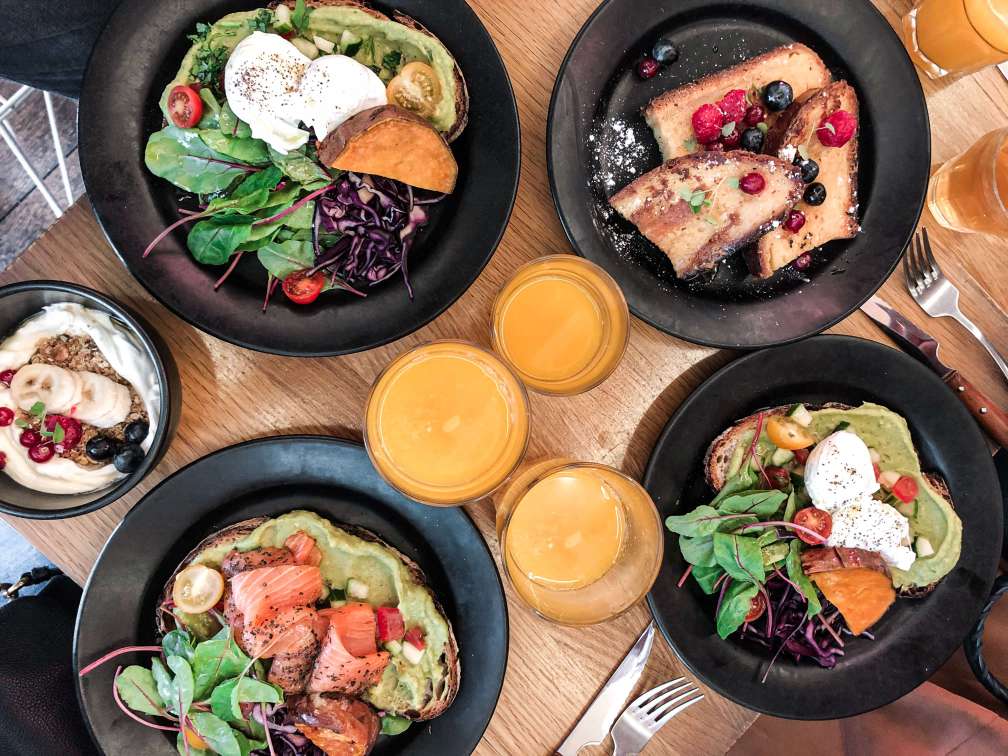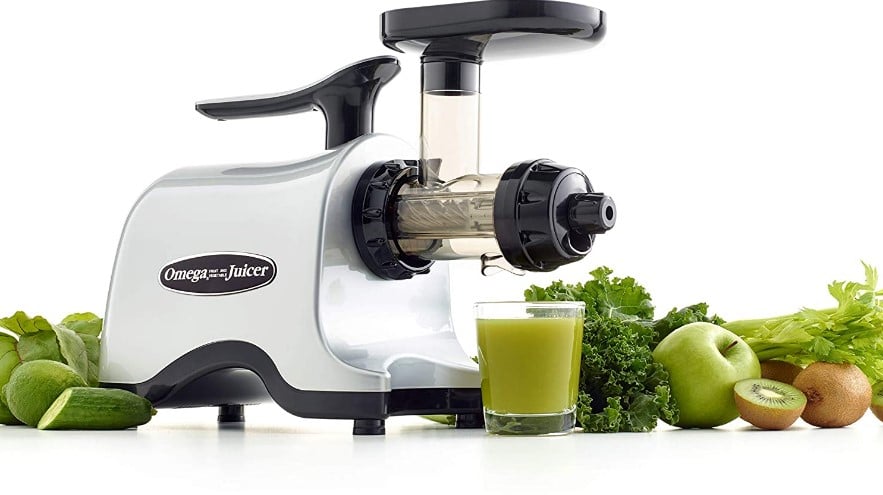Juicing is a great way to get your daily servings of fruits and vegetables. Juicing allows you to enjoy what would be an otherwise unpalatable drink, like carrot juice. However, juicing leaves behind the pulp which can’t be consumed by humans.
There are many ways we can put those leftover juices before they go bad to good use. This blog post guides what to do with pulp from juicer (fruit pulp, vegetable pulp including carrot pulp) and offers different options for what you can do before it goes bad!
Read More: Best Easy to Clean Juicers – Top Amazon Product Reviews, Buying Guide and FAQs
Contents
Leftover Juice Pulp Should Not Be Considered Waste
Though you may know to not discard leftover juice pulp, there are a few reasons why this could be unwise.
Juices at home are made to extract most of the nutrients and minerals out of the food ingredients, but even a good juicer leaves some leftover in the juice pulp.
Juice pulp will go bad if you don’t use it for something else before that happens. It’s important to put what could be a waste product to good use as soon as possible, or risk having it rot and stink up your kitchen!
What to Do with Pulp from Juicer – Further Food Preparations
There are many ways you can use the Leftover Juice Pulp. You will be surprised to know these pulps you can use in further food preparations. Here are some of the leftover pulp juice recipes:
Muffins
Add it to a batter for muffins, pancakes, or waffles, and cook just like you normally would do for baked goods. The pulp will add extra fiber and nutrients as well! Put that pulp to work with this simple recipe for muffin batter. Add in what you would like, such as blueberries or a mashed banana for sweetness and flavor, then bake until they’re done – it’s the perfect way to put that leftover pulp useable!
Oatmeal
You can also put pulp on top of oatmeal, yogurt, or cereal…just make sure to mix it in thoroughly first! If blended properly no one Juicer pulp can be used just like any other ingredient when making oatmeal. Simply add what you would normally have into your oats before cooking them on the stovetop according to instructions on the package. This is one of the easiest ways we have found so far that.
Fruit Salad
Mix what you’ve got in different combinations and make an easy fruit salad loaded with all sorts of nutrients from various fruits without adding anything extra but juicing!

Smoothies
Use the leftover juices in your morning smoothies by adding them at the bottom of your blender with other ingredients before blending them all. This way you’ll get the benefits from pulps without any taste being lost whatsoever!
Beets are one of those vegetables that can make you feel bloated but what do you do with all the leftover pulp? Add it to your smoothie instead! This will give you healthy fiber without feeling weighed down at the end of the day. You’ll also get more nutrients from this than if you had thrown away what was leftover.
Cream Cheese
Adding the vegetable pulp from your juicer to cream cheese provides a delicious vegetable cream cheese, but you can also add fruit to customize for your taste!
Pancakes
If that pancake craving has hit hard in the morning, what better way than to use your juicer’s leftover fruit pulp and/or vegetable pulp? Add banana or apple for sweetness, some oatmeal flakes for texture, whole wheat flour for fiber (if you can tolerate), baking powder & salt – get creative! They’re high in antioxidants too. If adding seeds like ground flaxseed or chia seeds be sure to grind them first so they don’t gum up your griddle. You could also add peanut butter if desired but I would recommend using just one tablespoon at a time to start with.
Baby Food
You can keep your juice pulp for use as a portion of baby food. Add water to the pulp in your blender and mix it at low speed until you achieve some consistency. Your little one will adore the sweetness, while the nutritional properties of this juice will bring benefits!
Olive Oil
Use your dehydrated vegetable pulp to infuse olive oil with a dash of flavor. This is one of the best ways to spice up your dishes by adding flavor in addition to the olive oil hint.
Make Dog Treats
If you have a fur baby, the pulp from your juicer can easily be turned into their favorite meal. Make your dog what he wants and have some peace of mind as you don’t need to worry about what goes into his mouth!
Freezer-Friendly Breakfast Burritos
Prepare a big batch of pulp-filled breakfast burritos that are freezer-friendly. Make them all nicely wrapped up in aluminum foil before freezing and store for later use, whenever desired. Just pop it out any time during one morning or evening when you want something filling but easy enough to make on the go.
Salad Dressing Mix
Use what you juiced with leftover juices in your favorite salad dressing mix recipe by adding few tablespoons at a time while whisking until well combined and voila – tasty homemade salad dressings without needed additional ingredients such as honey, vinegar, and sugar.
‘Pulpsicles’
Juicer pulp is usually tossed away, but with a little help, you can turn it into an easy frozen treat. Mix leftover pulp with some of the juice to give your popsicles flavor, pour into molds, and insert sticks in the center before freezing for 4 or more hours.
Make popsicle out of the pulp by combining it with your favorite fruit juice or puree like banana and strawberries for a healthy alternative to store-bought treats while still getting that childhood satisfaction we all love about them. Just pour what you’ve mixed into molds and freeze before enjoying!
Fruit Leathers
Instead of using sweetened condensed milk in the recipe, use the leftover juices from the juicer as an alternative but without adding any additional sugars if possible. This will make this snack healthier than what is traditionally made at home so enjoy guilt-free!
Infusing
Entire orange peel can be used for infusing gin. You may want to go ahead with this option only if you don’t mind the taste of gin and orange together. It would be a great option for making what’s known as an “Old-fashioned”.
Puréeing Soup Ingredients
The last use is something we always recommend because oftentimes, people don’t know what they’re going to want for dinner until after work or school has started which makes cooking any meal time consuming when trying to get what’s for dinner on the table. This is when you can use what’s left from the juicer to add a new flavor to your soup and save time in cooking!
Ice Cube
The use is something we always recommend because oftentimes, people don’t know what they’re going to want for dinner until after work or school has started which makes cooking any meal time consuming when trying to get what’s for dinner on the table. This is when you can use what’s left from the juicer to add a new flavor to your glass and save time in cooking!

Other than Food
No worries if you can’t use the leftover pulps in food preparations. You can always take what you’ve got and use it for making other do-it-yourself projects like soap or a facial mask, what have you.
Make Compost
Composting is a natural process where organic materials break down into the soil over time. If done properly, composting will provide nutrients to your garden plants and reduce waste in landfills. Use your leftover pulp as a nutrient-rich fertilizer for new plantings in the garden or add the pulp to your compost pile.
Mix what’s left of the fruit or vegetable pulp into old lawn cuttings, grass clippings, leaves, and manure – all food for plants! And don’t forget what happens when these ingredients decompose? The magic ingredient that makes them work so well together will also be added back to our beautiful gardens: Nitrogen. You’ll have happy plants plus healthy rich soil which can only lead to more delicious produce later down the line.
As Filler Material
Another way of using this leftover pulp is by adding it as filler material in potting soil. Adding natural fillers such as peat moss, sawdust, straw litter, leaves, and cardboard will result in healthier soil that retains water better and provides more oxygen while holding onto essential nutrients. Plus all the organic matter created from these ingredients improves the structure of the soil so roots grow well. You can even use your juicer’s leftover pulp to make your own potting soil by mixing it with other organic materials.
Fruit Fly Trap
Another idea that’s both practical and creative: save all of those juices from fruits (and veggies!) into one big bowl – preferably something glass or ceramic because we want this little guy to see what he wants so badly right there in front of him. Then just place a small plastic bag over the top, push all that air out and seal it up really tightly with a rubber band or string!
Clothing Dye
You will be fascinated to know that juice pulp can be used as a clothing dye! All you need to do is mix a few tablespoons of juice pulp with one cup of hot water, and then stir it until the color becomes uniform.
Skin Care Products
What to do with fruit pulp or veggie pulp? We can make skincare treatments by applying them directly on the face, or adding a few tablespoons of juice pulp into our favorite lotion recipes.
Pest Control
Another brilliant idea for what to do with your juice pulp – mix it up in the water and sprinkle it around your garden! The pests will be repelled because they don’t want anything that’s been soaking in all those juices you’ve put so much effort into making. Plus, if you’re having trouble with slugs eating away at your plants, this should stop that too!
Other Things to Consider
However, while you might be pretty excited with your leftover pulp, you should also keep these things in mind while cooking delicious items.
How Long You Can Store Leftover Juice Pulp?
Juice Pulp leftover from fruits like apples, strawberries, oranges, etc. should be stored in airtight containers or bags with as little oxygen exposure as possible because they go bad quickly.
These pulps are going to last at least five days in the fridge without any changes meaning it will take up less space than what one would think if storing them in jars which could also cause it to turn moldy faster (though not always) so that leaves more room for fresh fruit and veggies!!
Your Recipe will get Extra Liquid from Juicer Pulp
While adding juicer pulp to your recipe, please keep in mind that there will be extra liquid provided by most pulps.

The pulp will not absorb the liquids in your recipe so keep an eye on how much liquid you are adding to what I’m sure is a delicious dish!
It’s Important to Keep Your Pulp Separate from Other Food
For many recipes, juice pulp leftover should be stored separately because its flavor can change and taint other foods that require some sort of acidity or humidity (most fruits) but for recipes like muffins, cakes, etc., these juicer pulps can be added without any worries!!
How to Use Juicer Pulp?
Juice left behind after making fresh juice could be used as compost in your garden if you don’t want to store them – simply place your pulp in a pot, cover it with soil and water as per what you would do for normal compost.
It’s also good to know that juicer pulp can be dried out using dehydrators or just by air drying them on the counter-top – this way they’ll last much longer than fresh ones!
Pulp could potentially be used to make other food items too such as cereal, crackers, cookies, and more! (please note these are all hypothetical suggestions)
What NOT to Do with Juicer Pulp?
Juice pulp left behind after making fresh juice should not go near any kind of meat product because it will taint the flavor so please don’t add them into anything like an omelet where you are cooking meat.
Final Words
I hope you have found everything related to What to Do with Pulp from Juicer. The next time you juice, don’t let those pulps go to waste! Head over to the blog post for more information about what you can do with them and why they are so beneficial for your body.
Thank you again for reading, and we wish you a happy day!
Read More: The Best Twin Gear Juicers for Your Home in 2021



















